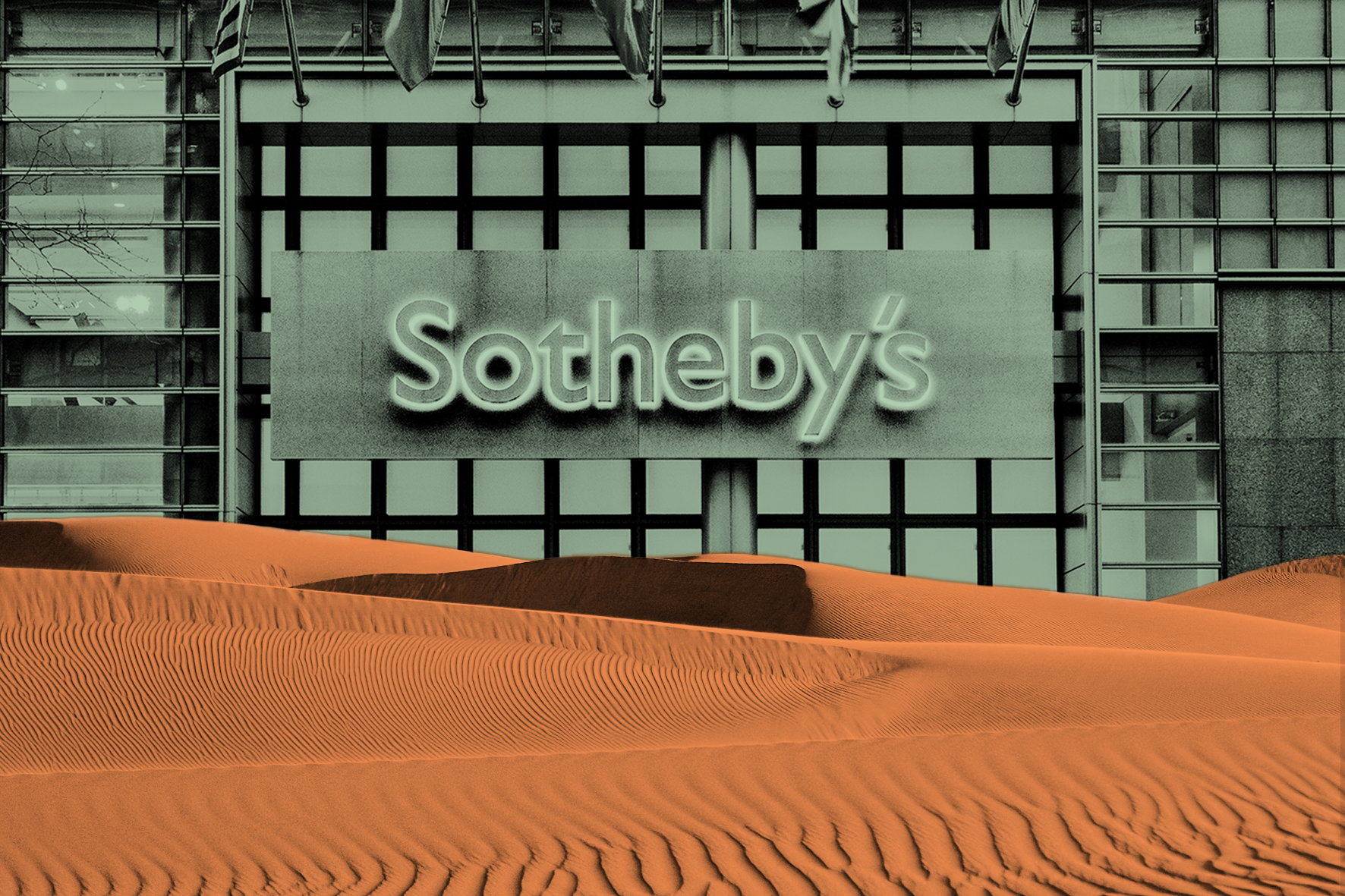What's next for Sotheby's?
| by Georgina Adam |

Illustration © Katherine Hardy
The whole art market—dusting the sand off its feet as it prepares for the autumn season—can talk about nothing but the New Yorker ’s recent deep dive into Sotheby’s and its owner Patrick Drahi.
The author, Sam Knight, among many revelations, wrote that Drahi told the French Senate in 2022 that he did not buy Sotheby’s for power or influence, but intended to triple the value of his investment.
Well, that doesn't seem to be working out well so far. According to the data analysis firm ArtTactic, auction sales for the first half of the year at Sotheby’s, Christie’s and Phillips fell by 6.2% in the first half of 2025 compared with the same period in 2024. Sales of post-war and contemporary art dropped 19.3% and Impressionist and Modern art fell by 7.7%, according to ArtTactic. But Drahi comes across—like many who entered the business before him—as an entrepreneur who thinks that he can make big bucks in the art world, even where others have failed.
Hard on the heels of the article came the announcement that Sotheby’s is starting a programme of auctions, masterclasses, panel discussions and exhibitions slated for Abu Dhabi in December. That month will see auctions offering jewellery, watches, property and cars alongside an “exhibition of international fine art”.
Interestingly, the programme is in partnership with the Abu Dhabi Investment Office; last year Drahi sold a minority stake in Sotheby's to ADQ, the Abu Dhabi sovereign wealth fund. Is this another step towards Abu Dhabi taking over the auction house? Asked about this, the firm just sent again the press release from a year ago announcing the minority investment.
While this has not happened—yet—what seems sure is that Sotheby’s is increasingly targeting the luxury goods market rather than art. The press release for the Abu Dhabi programme puts Josh Pullan, the head of the global luxury division at Sotheby's, front and centre. He is quoted as saying the firm is “cementing our position as a global powerhouse for luxury”, continuing: “With the Middle East—and the UAE in particular—as one of the most dynamic drivers of the luxury industry, we could have chosen no better home to do this than Abu Dhabi.”
Drahi, according to the New Yorker article, does not seem very concerned with the fine art side of the business, despite owning almost $1bn of the bluest of blue-chip art, from Picasso, Magritte, Bacon, Chagall, Dubuffet, Giacometti, Léger through to Kandinsky. There is an interesting insight from Antoine Champagne, the editor of the French magazine Reflets , who sees Drahi as the man with two pockets: one for tangible assets such as art, the other for his holding company Altice.
Time only will tell whether Drahi’s pivot to luxury and to the Middle East, which lacks a broad base of collectors for art, pays off in the long term, and if he will finally grow the company to $8bn, a figure that Sotheby’s contested in the article.
What does seem certain is that Sotheby's and Christie’s are moving in different directions, and this could present a great opportunity for the latter to focus on expertise, the personal connections to specialists, getting in consignments and the more traditional side of the art business. The question is, will that be enough?
05 September 2025